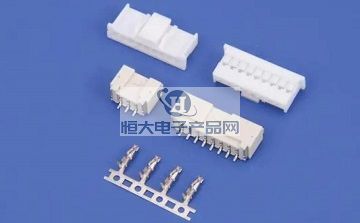Categorization:Product Information
Connector product design basics, knowledge, concepts, specifications are as follows: Basics Connectors are parts that connect signals, power, etc. between electronic devices. The connector is usually composed of two parts: the socket and the plug, of which the plug and the socket can be separated to achieve a removable connection. Connectors play a vital role in the design and manufacture of electronic equipment, which determines the reliability, performance and service life of the equipment. Design concepts In the design process of connectors, the following factors should be considered: (1) Adaptation to different use environments and application requirements, including temperature, humidity, vibration, dust and so on. (2) Reliability and safety, including insertion and extraction strength, anti-reverse insertion, anti-slip, waterproof, anti-electromagnetic interference and so on. (3) Easy to install and maintain, including the number of plugging and unplugging, easy disassembly, etc. (4) Cost saving, including manufacturing cost, maintenance cost, service life, etc. (5) to meet the standards and specifications, such as standards, industry standards, international standards, etc.. Specification connector design and manufacture must meet the relevant specifications and standards. Some of the important specifications are as follows: (1) UL (U.S. Safety Laboratory) certification, marking the connector has been in line with the safety standards in the North American market. (2) RoHS (Restriction of the Use of Certain Hazardous Substances) certification, which ensures that the connector does not contain hazardous substances, in line with environmental standards. (3) ISO (International Organization for Standardization) certification ensures the quality and reliability of the connectors. (4) IPC (Electronic Industry Consortium) certification to ensure the quality and performance of the connector. Design process The design process of the connector usually includes the following steps: (1) Determine the application environment and requirements of the connector, including the use of temperature, humidity, electromagnetic interference, etc.. (2) Design the mechanical structure of the connector, including the shape, size, location of the plug and socket. (3) Design the electrical properties of the connector, including resistance, inductance, capacitance, signal transmission rate, etc. (4) Prototyping and testing of connectors. (5) Perform mass production and testing of connectors.

-About Evergrande Electronic Products Network platform related to the introduction and sales of products briefly: Evergrande Electronic Products Network - a professional agent / production / sales of a variety of {connectors | wiring harness | wire and cable products }; if you have a related [connectors | wiring harness | wire and cable products] procurement / purchasing needs or would like to buy / to understand which connectors | wiring harness | wire and cable products we can provide solutions, please contact the following Division I business personnel; if you have a related [connectors | wiring harness | wire and cable products] sales / resources and promotion needs, please click on the "¡¡ business cooperation ← with the person to discuss! If you have related [connectors | wire harness | wire and cable products] sales / resources and promotion needs, please click on the "¡¡ Business Cooperation ←" to discuss with a person!